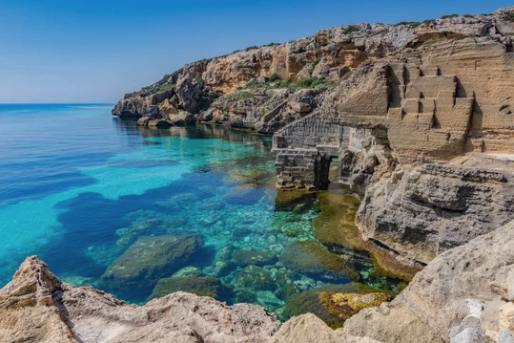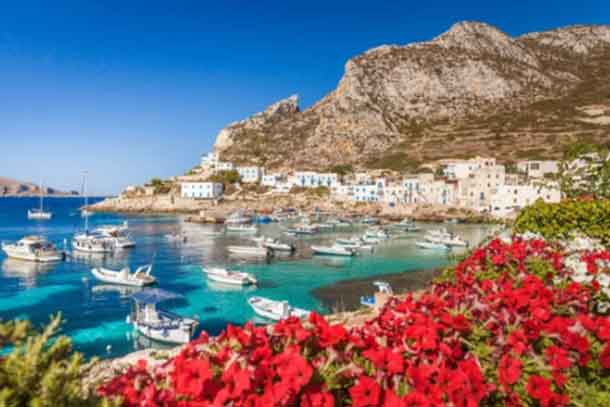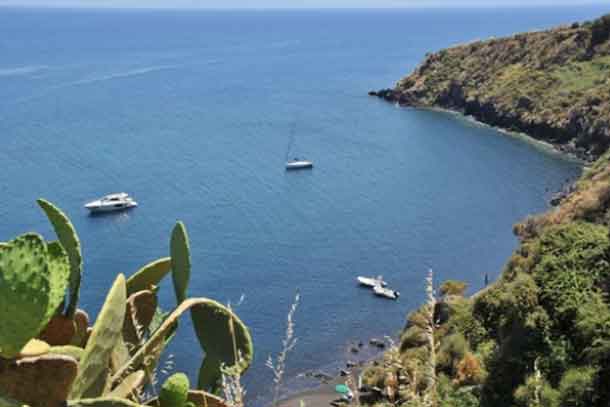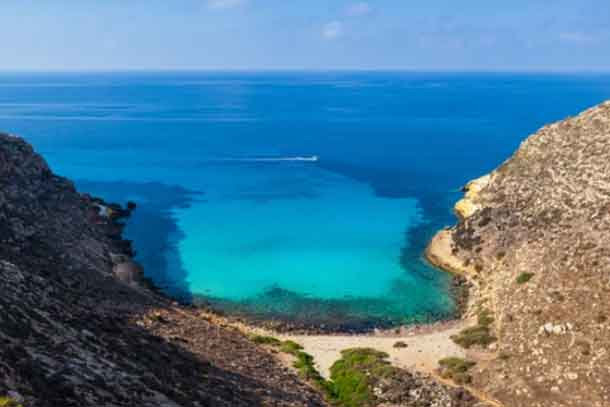Aegadian Islands
Favignana, Marettimo and Levanzo
The Egadi archipelago consists of several larger islands and four small islets, but the real heart of the Egadi Islands are the three best known: Favignana, Marettimo and Levanzo. Formica, Porcelli, Maraone and Asinelli are mainly large rocks; no one can remain indifferent to their beauty. But at the same time, these rocks are also archaeological and natural jewels, which is why the Egadi Islands are the new charter destination in Italy.
Favignana

Favignana is the largest island of the Egadi Islands, with an area of 54 hectares of marine reserve. It is shaped like a butterfly, which is why it is also known as the island of butterflies. 9 km long and 4 km wide, inside the island Favignana offers a special spectacle: the "enclosed gardens." In fact, the island is mainly made up of tuff, and in the past the technique of quarrying it left large holes in the rock. Today these holes are full of rich vegetation, wonderful hidden gardens, impossible to see from the roads and therefore to be discovered.
But it is from the sea that Favignana offers itself in its full splendor. Its depths are a classic underwater museum offering everything from a Roman ship to a 10th-century Arab ship with all its treasures on board, but you can also find the corsair galley. There are many divers on the island who can help you visit this underwater wealth.
The most beautiful beaches are: Cala Rossa - accessible with the wind from the south - Cala Azzurra, Lido Burrone - accessible with the wind from the north - Stornello, Cala Rotonda and Cala Grande - with the wind from the west. A note should be made for the caves on the northeast side of the island, which you definitely must visit. The small surrounding islands of Galera, Galeotta and Prevedo are also worth visiting.
Marettimo

Marettimo is the second largest island in the archipelago and the farthest from Sicily. It is separated from Marsala by 20 miles of sea, 13.5 miles from Favignana and 70 miles from Cape Bon (Tunisia). Marettimo is the oldest island of the Egadi Islands. It is described as a natural botanical garden, in fact the island is an imposing mountain full of plants and paths. But it is in the sea around Marettimo that the island offers its best: a paradise for snorkelers and those who love to discover caves, in fact Marettimo is the island of caves.
Sailing north you reach a strange rock that is shaped like a camel; inside is the Cave of the Camel. Following the path you will reach Cala Mione, a shelter when the sea becomes dangerous, and the Grotta del Tuono (Thunder Cave), so called because of the loud noises that can be heard inside, caused by the water. Crossing P.ta Due Frati you will come across a magnificent cleft in the rock: this is a green marble cave, and in addition there are Grotta Berciata, Grotta Bombarda and Grotta del Presepio, the latter with stalagmites, stalactites and statues inside.
Levanzo

Levanzo is the smallest of the three islands, with only 10 km in area. It lies 6.5 miles from Marsala and 2.2 miles from Favignana. Its depths are very rich in archaeological finds from Roman and Punic times. What is important is that Levanzo is home to one of the most fascinating caves in all of Europe: the Grotta del Genovese. The walls of this cave are covered with graffiti dating back 15,000 years.
There is only one paved road on the island that goes through the town of Cala Dogana, the other road is a mule trail that crosses the island from south to north to the Genovese Cave, along which are Cala Tramontana and C.da Case, an area well known to trekkers. Sailing westward from the small port of Cala Dogana is P.ta Pesce, where there is an underwater cave. Following this direction are Pizzo del Monaco, P.ta dei Sorci and Cala Tramontana, a rocky landscape of caves and caverns.
Circumnavigating the island to the south are Cala Calcara and P.ta Altarella.
Pantelleria

Pantelleria is known as the black pearl of the Mediterranean Sea because of the color of its coastline. The magic of this island lies in the waves crashing on the sea, the caves, the crystal clear waters and the hot vapors. Here wilderness combines with Pantelleria's typical human constructions called Dammuso, buildings made with thick walls of lava stones that keep the temperature cool inside. It is possible to rent them during the summer. Inside the island is a particular lake formation called "Lake of Venus," suggestive in its name and in the spectacle it offers.
From the coast, the circumnavigation of the island can start from the port of Pantelleria Centro, sailing clockwise along the route will reach the lighthouse of San Leonardo. Passing through it, one will reach Bue Marino. Continuing towards Cuddia Randazzo you will find the first cave called Curritia and the lighthouse of P.ta Spadino. Crossing P.ta Falconetto and P.ta Finestra you will enter the Gulf of Gadir.
Lampedusa

Lampedusa is the closest island to Africa, 46 miles from Cape Bon (Tunisia). It lies at the point where Europe begins and ends. It is 9 km long, 61 km from the Tunisian coast and 116 km from the Italian coast. Lampedusa and its smaller islands, Linosa and Lampione, form the Pelagie archipelago. Lampedusa is mainly a desert place; in the past it was exploited by some Maltese settlers who wanted to create new agricultural areas, but they soon abandoned the project. Around the island, in its depths, you can see tropical fauna that is very rare in the Mediterranean Sea. The coast of Lampedusa is full of small beaches and caves all to be discovered by sea. You can start by following the route to the west, and you will arrive at Guitgia Beach, continuing on this route you will find Cala Croce, Cala Madonna, Cala Greca and the very famous Cala Galera. A shallow water line divides Lampedusa from the famous Isola dei Conigli (Rabbit Island, as it was once inhabited only by rabbits). Sometimes, at low tide, the distance can be covered on a thin strip of sand formed between the main islands and the islet.
See also:
- Yacht rental with sailing in Palermo to tour the Egadi Islands
- Sailing yacht rental in Palermo for romantic holidays in Sicily
- Sailboat rental Sicily with or without a skipper
- Sailing holidays in Sicily with skipper
- Luxury holidays with sailboat yacht rentals in Sicily
- Cruise in Sicily on a sailboat or catamaran with skipper
- Boat rental in Palermo to tour the Aeolian Islands







